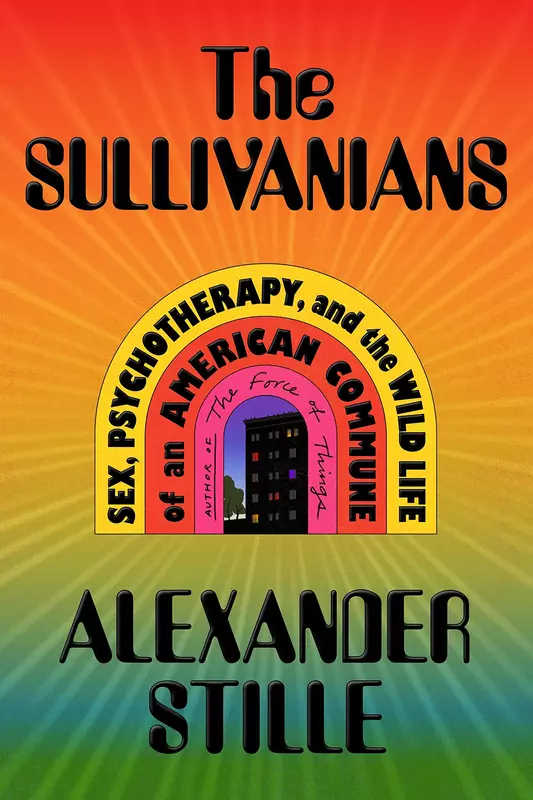This post may contain affiliate links. Read more here.
Wow, where do I even begin with “The Sullivanians“?
Alexander Stille has masterfully crafted a mesmerizing account of an almost forgotten chapter of American history that leaves readers in awe and disbelief.
The book delves into the birth and evolution of the Sullivan Institute for Research in Psychoanalysis, a psychoanalytic organization that started as a revolutionary movement grounded in ideals of creative expression, sexual liberation, and freedom from societal norms.
The founders, Saul Newton and Jane Pearce, aimed to dismantle the nuclear family and monogamous marriage, believing it would liberate people from the repressive forces of their parents.
The Sullivanians by Alexander Stille
Initially attracting brilliant and creative individuals, including artists like Jackson Pollock, abstract expressionists, and musicians like Judy Collins, the movement transformed into an urban commune of hundreds, advocating polyamory and communal living. It’s incredible to imagine such an unconventional lifestyle hidden in plain sight in the heart of Manhattan during the seemingly conservative 1950s.
Yet, what started as an experiment in communal living eventually devolved into a deeply secretive and oppressive cult under the leadership of Saul Newton. Stille takes us through the shocking transformation, painting an intimate portrait of the twisted world that emerged.
From Polyamory to Controlling Cult
As the Sullivan Institute evolved, it transformed into an urban commune of hundreds of individuals, including renowned artists, musicians, and intellectuals. Living together and embracing polyamorous lifestyles, they defied the conventional norms of the era.
However, as time passed, the institute’s leadership, particularly under Saul Newton, took a dark turn, becoming increasingly secretive and controlling. Therapists gained power over nearly every aspect of their patients’ lives, leading to a troubling atmosphere of dependency and repression.
Reading this book, I couldn’t help but be captivated by the blend of history, psychology, and human drama. Stille’s research is meticulous, drawing from countless interviews, personal papers, and memoirs to reveal the almost unbelievable story of this fallen utopia. It feels like I’ve been taken on a time-traveling journey, witnessing the rise and fall of a movement that started with ideals but ended in chaos.
Unraveling the Secrets
The accounts of former members, including those who were born and raised in the Sullivanians, are particularly fascinating and heartbreaking. Stille’s respectful treatment of these individuals sheds light on the dynamics of communal living under the dominance of narcissistic leadership and absent, neglectful parents. The children, now adults, share their experiences growing up in a society that put ideology above compassion and kindness.
The narrative style of the book keeps you engrossed from start to finish. Stille has an engaging way of presenting the facts, blending historical context with personal stories that make you feel like you’re right there, witnessing it all unfold.
Some reviewers have mentioned that the book can be a bit repetitive at times, but I believe the repetition only adds to the book’s authenticity. After all, the experiences of the Sullivanians must have been repetitive in their daily lives, trapped within the confines of the cult-like commune.
“The Sullivanians” also offers a unique perspective on the times it existed, embracing the counterculture and alternative therapies of the 60s and 70s. From Marxist theories to hierarchical conformity, the group’s trajectory follows patterns often seen in cults and certain religious orders. It’s a cautionary tale of the dangers of extremist ideologies and the power they can wield over even the most intelligent and educated individuals.
For me, the most impactful part of the book was reading the review from someone who lived in one of the Sullivanian houses and had a parent involved in the group. It brings home the reality of this astonishing tale, knowing it’s a first-hand account from someone who was there.
Final thoughts
“The Sullivanians” is more than just a history book; it’s a deeply personal exploration of human nature and the potential for both darkness and resilience within us. I highly recommend this captivating read to anyone intrigued by the dynamics of communal living, the impact of narcissistic leadership, and the profound consequences of detachment and neglect.
In summary, Stille’s “The Sullivanians” is an essential read that brilliantly uncovers the hidden story of a radical experiment turned oppressive cult, leaving readers shaken and reflecting on the fragility of the human spirit.
